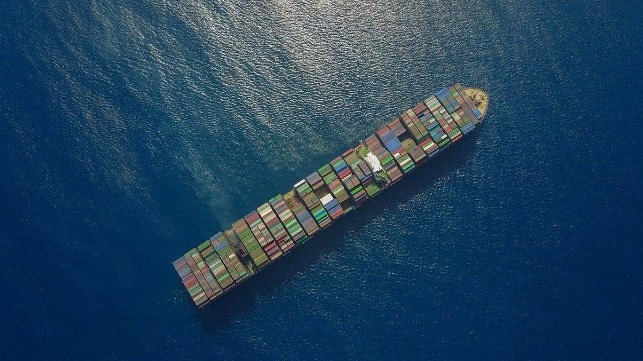New Consultancy Advocates for Ammonia as an Alternative to LNG

A new consultancy led by the director of the Ammonia Industry Association and two Clinton Foundation alumni has released a report on the growing momentum behind ammonia as a marine fuel - and it suggests potential opportunities for shipowners who come on board.
In its debut research paper, New York-based Carbon Neutral Consulting highlights the large (and growing) number of high profile projects to deploy ammonia as an energy storage medium for shipping. Among others, NYK, Wärtsilä, MAN, Japan Engine Corporation and the Mærsk Mc-Kinney Møller Center for Zero Carbon Shipping are all engaged in technical research that may one day enable ammonia-based propulsion.
There are two low-carbon ways to make the hydrogen required for ammonia. The first is via steam reformation of natural gas or coal gas, producing H2 and CO2. If most of the CO2 is captured and stored, the H2 stream is a low-carbon fuel source. The second is via hydrolysis, splitting water into hydrogen and oxygen using electricity. This process has low round-trip efficiency, but if the electricity is renewable, the H2 stream is a low-carbon fuel.
Reacting that hydrogen with nitrogen produces ammonia, which has a much higher energy density than lithium-ion batteries or liquefied hydrogen. This is a key factor for long voyages, as deep-sea vessels have to carry their fuel with them for thousands of miles at a time. With the right engineering, ammonia can be burned in a modified diesel engine or a solid-oxide fuel cell (SOFC), with no shipboard carbon emissions.
"Our view is that you only use fuel when you can’t use electricity, and hydrogen is the first choice after that. But when you can’t use hydrogen, there's ammonia," the firm sums up.
With the possibility of IMO greenhouse gas regulation on the horizon and uncertainty over what the next bunker fuel will be, Carbon Neutral Consulting argues that ammonia may be the most scalable, affordable, practical option. In short, an ammonia-based business plan "enables commercial success across a period of intense disruption regardless of the actions of your competitors," says co-author Milton Bevington.
While acknowledging that many technical questions are not yet fully resolved, the authors also position ammonia as a superior investment alternative to LNG, which has often been proposed as a transition fuel.
"We believe [LNG investment] is unlikely to position the company for long-term success. The problem is the devotion of the company’s ingenuity and capital . . . to an interim solution. In 2030, the IMO’s 50 percent emissions reduction target will be just 20 years away - well less than the normal replacement cycle for ships and other long-lived assets," the authors argue. "What if competitors have found a way to achieve 2030 compliance with an approach that will already put them at or near 2050 compliance? This would clearly be a business strategy challenge."
Supply questions
Like all renewables, ammonia comes with questions of supply and availability. After all, shipping won't be the only consumer of renewable H2 (stored as ammonia or otherwise). Will it be economically feasible to make enough green hydrogen to go around for shipowners, airlines, truckers, steelmakers, chemical plants and utilities, and in time to meet the IMO 2050 / Paris Climate Accord deadline? The authors believe that it is.
"The challenge isn’t the economics of low-carbon hydrogen or ammonia, but whether we’re physically able to scale up production that far by 2050, which is only a few investment cycles away from today. The sooner we get started the better," says Trevor Brown, the executive director of the Ammonia Energy Association. "The function of ammonia synthesis is to make [abundant] renewables available to the maritime sector and others, stored and distributed as molecules. Ammonia and hydrogen will be scaling up from a large installed industrial base. Is it difficult to double the industry capacity in 30 years? Absolutely, a massive scale-up challenge. But is it impossible? No way."
